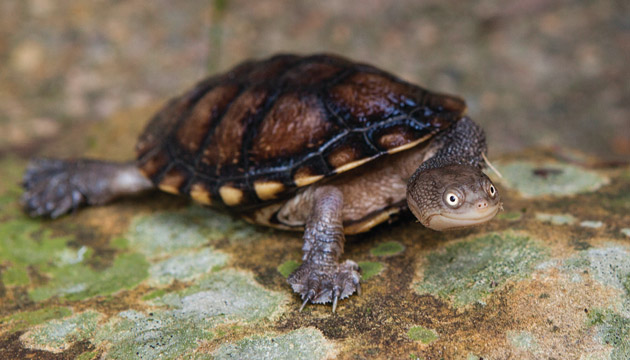Freshwater turtles living in and around the Murray River are declining but there’s a concerted effort from several sectors of the community to give them the best chance of survival.
Story Genevieve Barlow Photo Rosie Nicolai
The turtle is a benign creature and generally much loved. Along the Murray River in south-eastern Australia, the broad-shelled turtle is also a culturally significant, totemic species for the Yorta Yorta people.
Yorta Yorta elder Uncle Col Walker, 82, who lives at Cummeragunja, near Barmah, NSW, calls it “the big fella”. “Even when we were kids and we’d go out fishing with my grandfather and uncles, we were always told if we pulled him in on the line to treat him gently, to put him back in,” Uncle Col says. “He was an indicator to show us where the water was and the wetlands. We didn’t eat him. We’d eat the other little fellas, but not him.”
Its cultural significance might also reflect the essential role the turtle plays in life’s great web. The broad-shelled turtle helps clean the river, eating fish corpses and other carrion. But scientists say it’s in trouble. Research is tracking populations and threats to these and two other species, the eastern long-necked and the Murray River turtle, that live in and around the river and its creeks and wetlands.
This story excerpt is from Issue #114
Outback Magazine: August/September 2017










